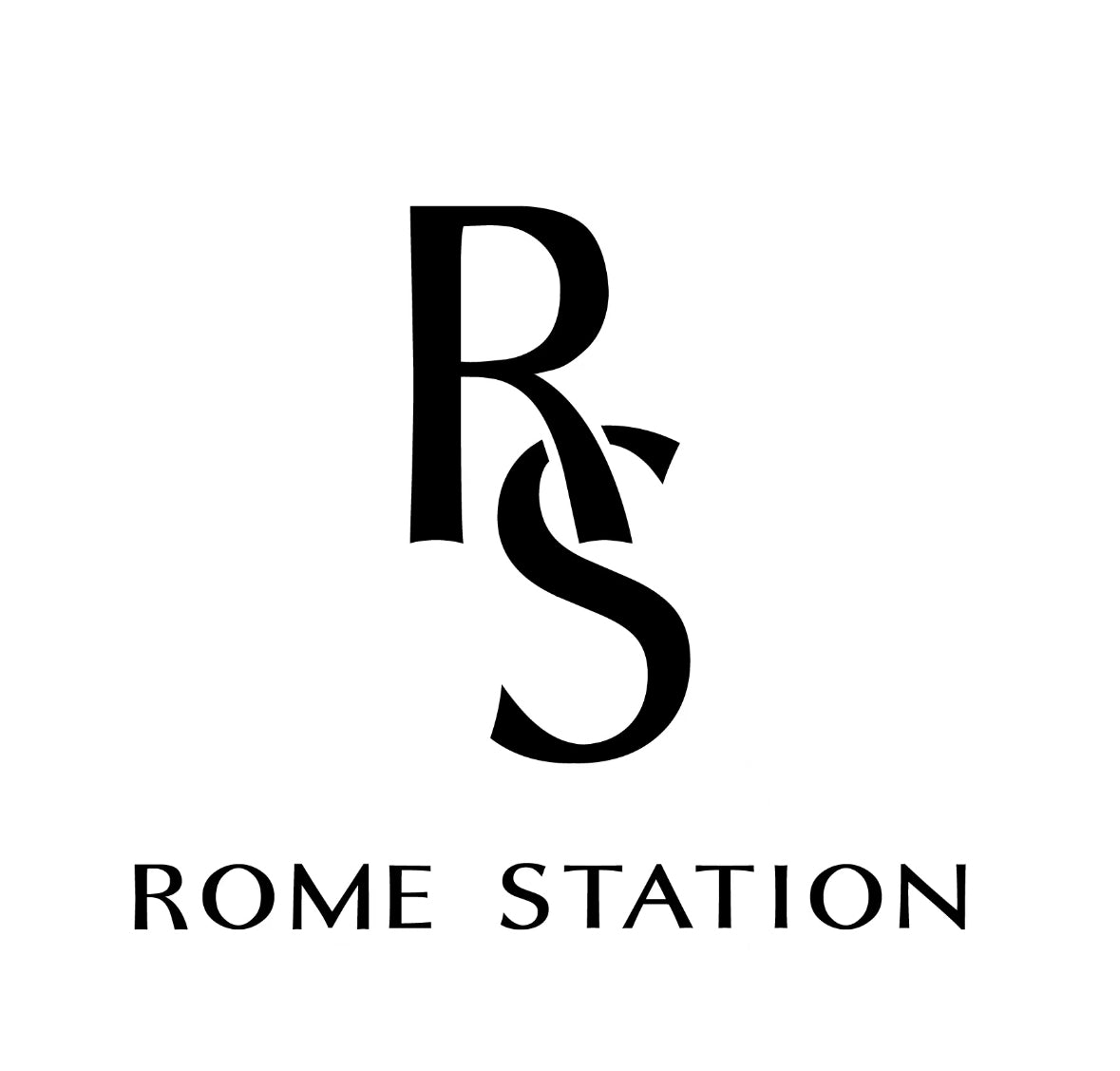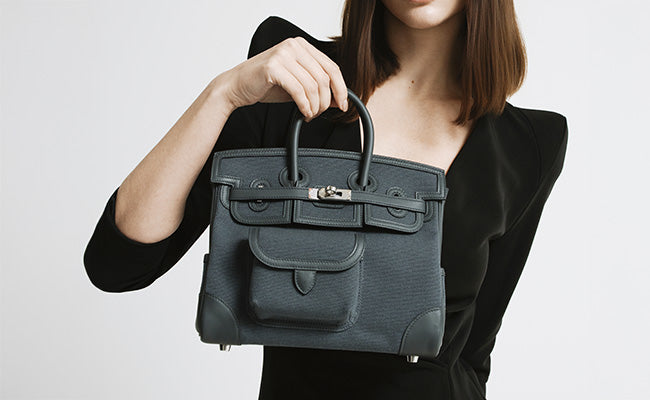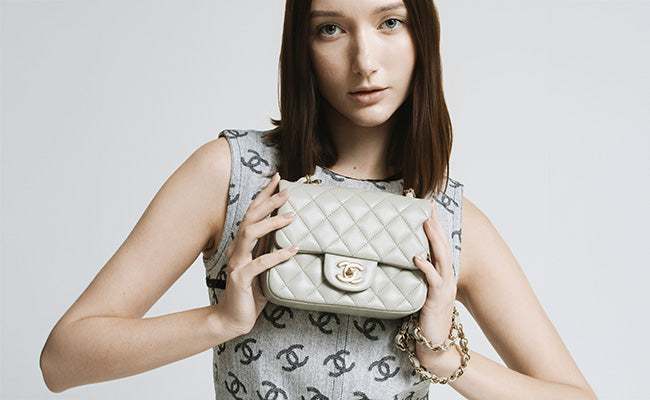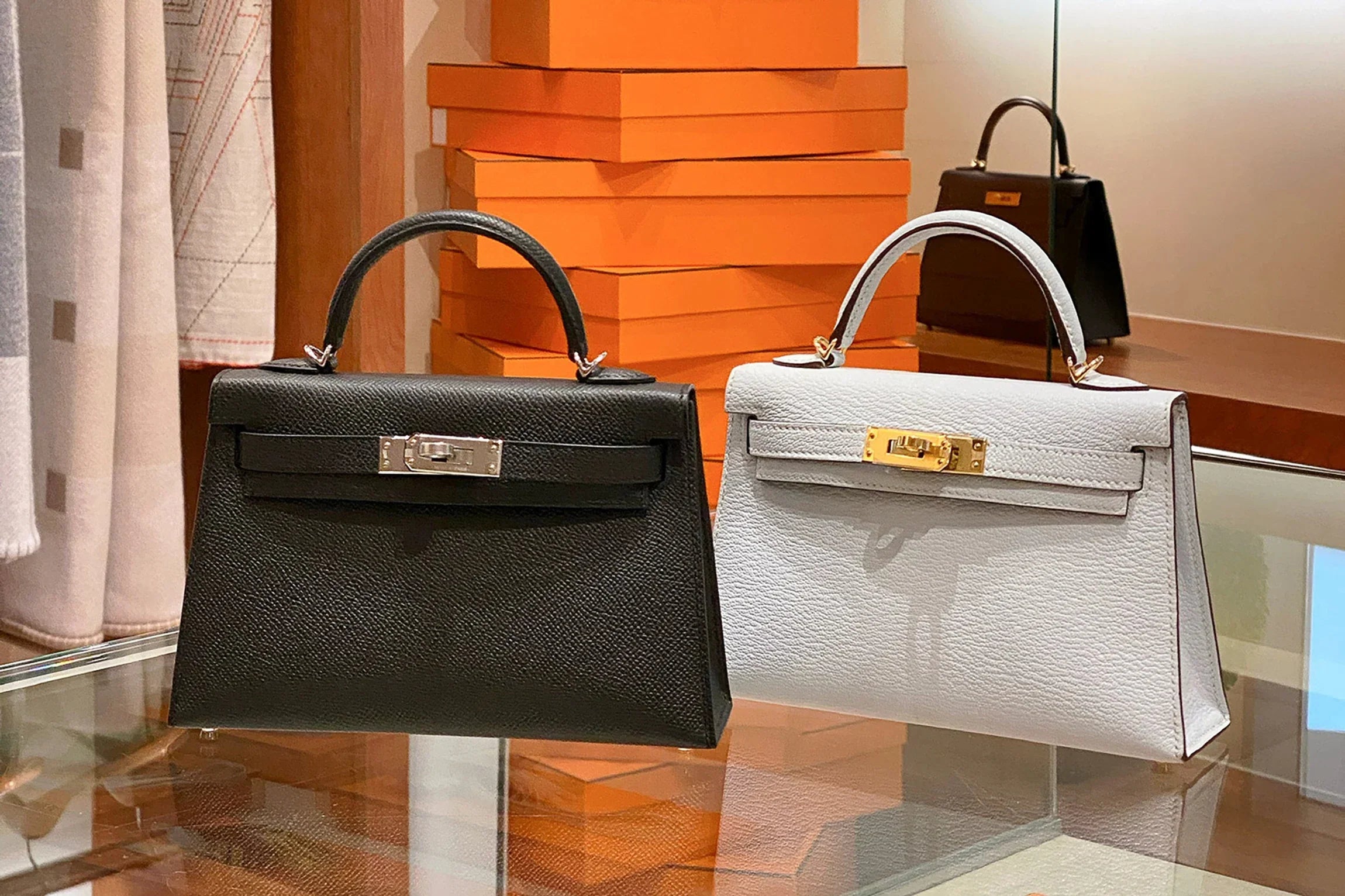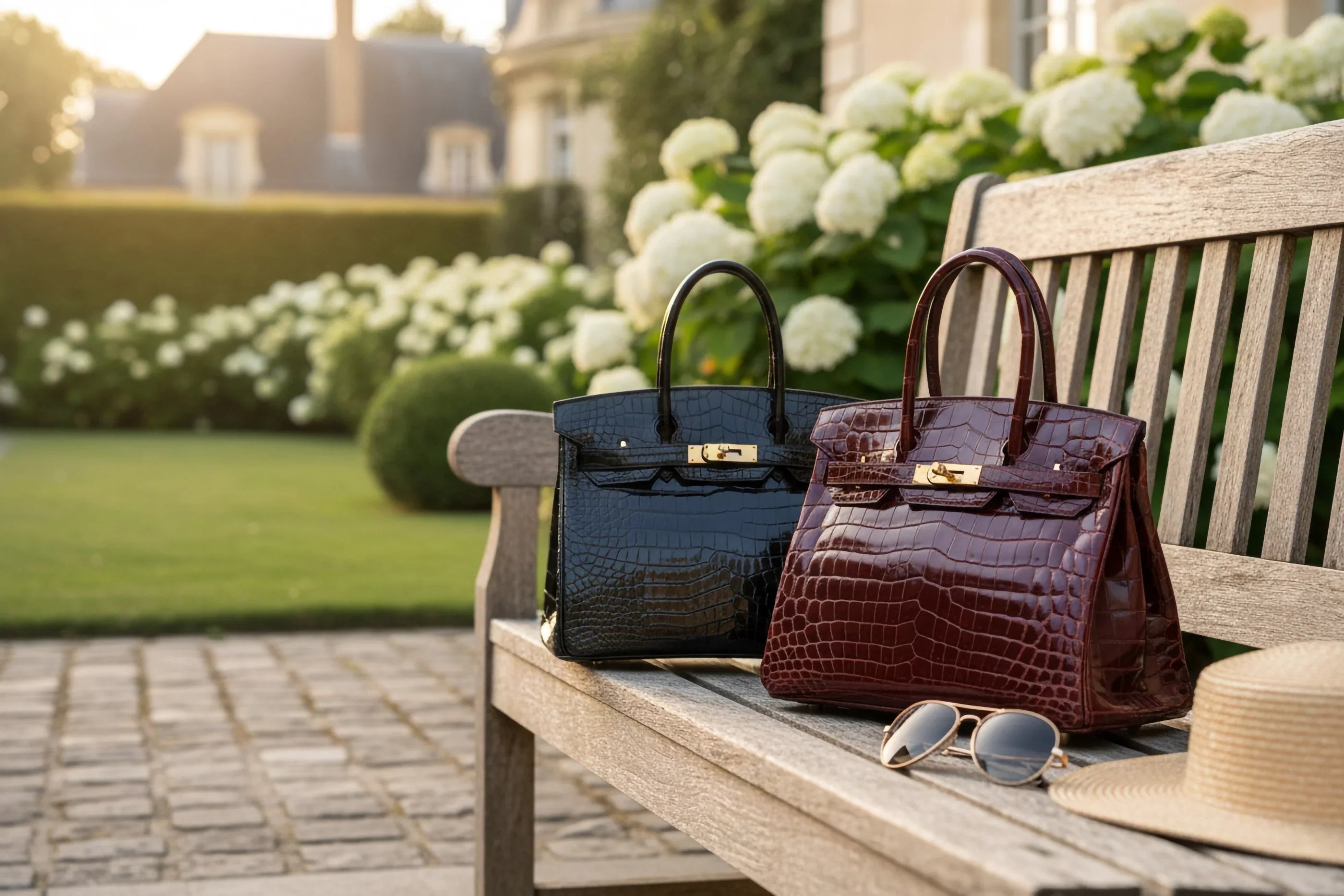
Understanding Luxury Handbag Investments: Risks and Rewards
Check out our Hermès collection and Birkin bags!
Luxury handbags have sparked more investment buzz than some stocks on Bay Street. From rare Hermès Birkins to limited-edition Chanel classics, fashion lovers try to turn their passion into profit. Understanding the true risks and rewards of investing in luxury handbags is essential before we even think about buying our next coveted piece.
So, what actually makes a handbag an investment instead of just a pretty accessory? Tracking trends, spotting fakes, figuring out the resale market, and caring for our bags can mean the difference between a smart move and a costly mistake. If we break it all down, maybe we’ll figure out if the luxury handbag world is a place for our money, or just our dreams.
Key Takeaways
- Not every luxury handbag offers strong investment potential.
- Market trends, authenticity, and condition drive returns.
- Smart investing requires research, care, and timing.
What Defines a Luxury Handbag Investment?
A luxury handbag investment goes beyond buying a bag for style or function. We look at rarity, craftsmanship, and historic resale trends to spot pieces with the best long-term potential.
Key Features of Investment-Worthy Handbags
When we size up handbags as investments, we focus on durability, timeless design, and brand prestige. Craftsmanship matters, a lot. Bags made from great leather with careful stitching last longer and look better.
Limited editions, rare colours, and exclusive collaborations can bump up value since scarcity drives demand. Bags with all their certificates, original packaging, and in mint condition fetch higher prices on resale.
Provenance adds another layer, bags owned by celebrities sometimes get huge premiums. Size and versatility matter too. Mini bags might trend for a season, but classic totes or shoulder bags usually stick around.
Here’s a quick checklist for spotting investment-worthy handbags:
- Exceptional craftsmanship
- Iconic design
- Limited editions
- Original packaging/documentation
- Respected brand heritage
Luxury Versus Designer: The Distinction
Not every designer bag counts as a luxury investment. True luxury handbags use the best materials and are made in ateliers with strict quality control. They aren’t mass-produced; some take days to finish.
Designer bags, even if iconic, are made at a larger scale and often use less exclusive materials. This difference matters for resale value. Brands like Hermès or Chanel keep supply tight, which means strong demand and higher liquidity compared to mass-market designers.
Luxury handbags tend to hold or increase in value, while most designer bags lose value after the initial purchase. It’s kind of like the difference between a rare vintage car and a stylish sedan, heritage and scarcity make all the difference.
Popular Brands That Hold Value
Some brands have a solid track record for investment returns. Hermès, especially the Birkin and Kelly lines, consistently tops the list, often appreciating over time, depending on colour and rarity.
Chanel does well too, with classic Flap and Boy bags loved by collectors. Louis Vuitton is another strong player, especially with rare collaborations or discontinued lines.
Other brands catching collectors’ attention include Dior (especially limited Lady Dior bags), Goyard, and Céline (especially Phoebe Philo-era pieces). Brand reputation, iconic designs, and tight distribution all help drive long-term value. Watching industry trends and auction results can help us spot the next classic.
Understanding Market Demand and Trends
Luxury handbags, especially from Hermès, are tied to changing demand and cultural shifts. Watching factors like launch scarcity, media exposure, and economic trends helps us make smarter purchases and avoid traps.
High Demand Models and Limited Editions
Some bags stand out as clear favourites in both resale markets and among collectors. The Hermès Birkin and Kelly, for example, lead for consistent demand. Models in exotic leathers, rare colours, or special collaborations usually get even higher premiums.
Scarcity boosts value, limited editions or discontinued runs are usually more sought-after. We often see these bags pop up at auctions with price tags way above their original price. Condition, original packaging, and documentation (like receipts and dust bags) matter a lot.
| Model | Typical Resale Premium | Key Scarcity Factor |
|---|---|---|
| Birkin (Crocodile) | 1.5x to 3x original | Exotic skin, colour |
| Kelly (Mini) | Up to 4x original | Small size, limited runs |
| Chanel Classic Flap | 1.2x to 2x original | Annual price increases |
Influence of Celebrity Culture
Social media and celebrity endorsements can flip the script on which handbags are suddenly hot. When Kylie Jenner or Victoria Beckham shows off a rare Kelly, watchlists fill up fast.
Demand can spike overnight if a celebrity posts a new bag on Instagram or gets photographed at an event. This ripple effect often means boutiques run out, and resale prices shoot up.
Bags tied to pop culture moments or famous owners sometimes become fashion history, pulling even more attention.
To keep up, it helps to follow media coverage, top Instagram or TikTok accounts, and auction results. That way, maybe we’ll spot trends before they blow up.
Economic Factors Impacting Value
Economic trends, currency swings, and boutique pricing all affect luxury handbag values. Exchange rates between Canadian dollars and Euros, for example, can change cross-border shopping and demand.
When economies are strong, people are more willing to buy high-ticket items. Rare Hermès or Chanel bags might see resale prices climb. But during downturns, more sellers pop up, which can soften prices or flood the market.
Brands regularly raise retail prices, and that can push resale values higher. For us, watching retail price changes, inventory shifts, and big currency moves helps us guess where things might go.
- Keep tabs on official price hikes
- Track local boutique stock
- Watch major currency shifts
Assessing the Rewards of Investing in Luxury Handbags
Jumping into luxury handbags is about more than style. The rewards can touch our wallets, wardrobes, and even our social circles, if we play it right.
Appreciation Over Time
Some luxury handbags, especially from Hermès, Chanel, and Louis Vuitton, have shown solid value growth over the years. The Hermès Birkin, for example, has rare editions that have outperformed things like the TSX index or even gold.
What drives this? Tight supply, brand prestige, and limited production runs. Scarcity and strong demand for certain styles, colours, or leathers add to the magic. Sometimes value jumps quickly; other times, it creeps up quietly.
Not every handbag will see gains. Birkins and Kellys might be reliable, but trendy seasonal pieces may not offer much appreciation. Doing our research and timing things well can help us make smarter picks.
Personal Enjoyment and Status Symbol
Unlike most investments, luxury handbags can make us happy every day. Carrying a classic Hermès Kelly or a special Chanel isn’t just practical:
- It shows off status and taste in a way few other things do.
- For some, it’s a personal treat and a confidence boost.
- There’s just something about holding soft, beautifully made leather, every detail finished by hand.
People notice a premium bag, especially those who get luxury goods. Collecting and using these bags becomes part of our lifestyle, sometimes even a way to connect with other fans. Our investment tags along to lunches, galas, errands, and more.
Resale Opportunities
If we want to cash out, the resale market can be strong. Online platforms and auction houses make it much easier to reach buyers worldwide.
When reselling, keep in mind:
- Condition is key. Original dust bags, receipts, and boxes boost value.
- Popular colours like black, gold, and neutrals are usually easier to resell for a premium.
- Limited editions or rare exotics can spark bidding wars.
With patience and good timing, our investment might pay off if we want to upgrade or just switch things up. The option to sell, swap, or trade keeps our collections fresh and interesting.
Risks Associated with Luxury Handbag Investments
Investing in luxury handbags can be tempting, especially with Hermès fever everywhere. But we need to keep our eyes open for risks that can trip us up or eat into our returns.
Market Volatility
Luxury handbag values don’t always climb. Trends shift, and what’s hot today, like the Birkin or Kelly, might cool off next season. Economic dips or fashion changes can slow sales and drop prices.
Market oversaturation is another risk. If too many of us sell the same bag at once, prices tumble. Limited editions and exclusive colourways help, but timing matters.
Some value factors to watch:
- Brand reputation changes
- Style and trend cycles
- Release of new models
- Economic downturns
Liquidity isn’t guaranteed. If we need cash fast, finding a buyer at our price isn’t always easy.
Authentication Challenges
Fakes are getting really good. With high-quality counterfeit Hermès and Chanel bags everywhere, even seasoned collectors can get fooled.
Buying or selling on unofficial platforms adds risk. Trusting unknown sellers can lead to expensive mistakes. Third-party authenticators help, but even experts sometimes disagree.
If a bag’s authenticity certificate isn’t recognised by major resellers, value drops fast. To lower risk, we need to use thorough authentication:
| Check | Why it matters |
|---|---|
| Serial numbers | Identifies counterfeit |
| Stitching technique | Hermès uses specific |
| Hardware engraving | Genuine pieces only |
Missing documentation or original packaging can raise doubts, making buyers hesitate and lowering resale potential.
Condition and Maintenance Issues
Our investment only holds value if the bag looks great. Scratches, stains, or stretched handles can slash resale price, even on a rare Birkin.
Luxury bags need proper storage, away from sunlight, humidity, and extremes. Using the wrong cleaner or storing bags without stuffing can cause permanent damage.
Small repairs, like replacing a lock or fixing threads, are possible, but heavy restoration often turns off buyers. Here’s a quick maintenance checklist:
- Store bags in dust bags
- Don’t overfill
- Handle with clean hands
- Use leather conditioners recommended by the brand
It’s easy to let things slide, but sloppy care might turn a $20,000 investment into a regret.
Evaluating Authenticity and Provenance
When we’re eyeing investment-grade handbags, a sharp eye for authenticity and solid provenance isn’t just a nice bonus, it’s essential. Details matter, especially when fakes are everywhere and missing documents can knock thousands off a bag’s value.
Common Red Flags for Counterfeits
We’ve all seen fakes trying to pass as the real deal, and sometimes it’s not just bad logos or crooked stitches. Space between letters on a Hermès stamp, weird font weights, or off-colour hardware, these little things often signal trouble. If the leather feels plasticky or lacks that buttery luxe, maybe hit pause.
Red flags to watch:
- Weird serial numbers or missing date stamps
- Stiff or cheap-feeling leather
- Hardware that’s too light or engraved wrong
- Errors in brand embossing (spacing, font, spelling)
Also, real bags never have plastic-wrapped handles or mismatched dustbags. Trust your gut. Comparing a bag to Hermès archives or trusted reseller images can save a lot of headaches. Being picky is a plus here.
Importance of Documentation
Provenance can be more valuable than a pristine ribbon. Original receipts, care booklets, authenticity cards, and store stamps create a paper trail that backs up a bag’s legitimacy and value. Always ask to see these before dropping serious cash.
No documentation? You might hit resale barriers or face questions about authenticity. Even the original orange Hermès box, dustbag, or purchase invoice helps reassure future buyers. Here’s a quick checklist:
| Document | Why It Matters |
|---|---|
| Receipt | Proves original purchase |
| Care Booklet | Confirms Hermès standards and care advice |
| Dustbag/Box | Affirms complete, authentic packaging |
| Authenticity Card | Supports legitimacy, especially for resale |
Keeping records safe isn’t just smart, it can make or break your investment value down the road.
Storage and Handbag Care for Long-Term Value
We all want our investment bags to stay gorgeous for years, right? A little extra care with storage and cleaning pays off big time. Protecting the materials and structure keeps resale value high and our favorites looking sharp.
Proper Storage Techniques
Storing luxury handbags the right way keeps them looking crisp and prevents those annoying dents or creases. If you have the original dust bag and box, use them. Plastic wraps? Skip those, they just trap moisture and can cause mildew.
To keep the shape, stuff bags with acid-free tissue or a soft purse pillow. Newspaper’s a no-go; that ink likes to wander. Stand bags upright on a shelf, don’t hang them by their handles or you’ll risk stretching or cracking the straps.
A cool, dry spot away from sunlight is crucial. UV rays fade color and dry out leather before you know it. In humid climates, toss in some silica gel packs or run a dehumidifier. If you’re rotating your collection, air out each bag occasionally to keep that musty smell away.
Cleaning Dos and Don'ts
Routine cleaning helps, but there’s no need to overdo it. A gentle wipe with a soft, clean cloth once a week keeps dust from building up. For deeper cleans, check the bag’s care card or call the boutique for advice tailored to the brand.
Don’t reach for harsh chemicals, alcohol wipes, or baby wipes, they can stain or strip finishes. For stubborn spots, test a dedicated leather cleaner on a hidden area first. Always pat dry with a lint-free towel.
Wipe hardware with a dry microfiber cloth only; moisture can tarnish metal fast. And honestly, those DIY tricks from the internet? Probably best to skip them, luxury leather isn’t the place to experiment.
Strategic Buying and Selling Tips
Diving into luxury handbags means thinking carefully about where we buy and when to sell. The right marketplace and timing can mean the difference between a solid profit and disappointment.
Where to Buy and Sell Luxury Handbags
To avoid buyer’s remorse, stick with tried-and-true sources. Authorized boutiques like Hermès, Chanel, and Louis Vuitton guarantee authenticity, though they might have restrictions for hot-ticket items like the Birkin or Kelly.
For pre-owned finds, reputable resale platforms, Vestiaire Collective, The RealReal, Fashionphile, employ authentication teams to weed out fakes. Still, always ask for original paperwork, dust bags, and proof of purchase.
When selling, those platforms offer convenience and global reach, but expect commission fees of 20–30%. Private sales through trusted social media groups or luxury consignment shops in big cities can sometimes net better offers, but scams are a risk. It’s a bit of a gamble.
Timing Your Purchase and Sale
Honestly, timing makes a huge difference. Selling right after buying rarely brings the best returns. Bags from limited collections or discontinued colors tend to gain value faster, so keep an eye on launch calendars and upcoming seasons.
Buying close to collection release dates means you might score the most-wanted pieces before resale premiums hit. For selling, the run-up to major holidays or fashion weeks usually boosts demand and prices.
Patience really does pay off, especially for classics like the Hermès Birkin, Kelly, or Chanel Flap, they often hold or even gain value over time. Avoid rushing to sell right after major restocks or influencer drops; those periods can flood the market and drive prices down.
The Role of Rarity, Customization, and Special Orders
Rarity and personalization can make a luxury handbag truly stand out. Limited editions and custom work catch collectors’ eyes, and sometimes the right bag turns into a real investment.
Impact of Limited Runs and Exclusivity
Limited runs aren’t just about scarcity, they spark excitement and drive up demand. A Hermès Birkin or Kelly in a rare color or leather? Those disappear fast. Collectors, investors, and resellers all try to snap them up, hoping for appreciation.
Brands fuel exclusivity through strict waitlists or requiring purchase history. With Hermès, even deep pockets don’t guarantee access. That makes finally landing a bag feel like a win, and often brings a hefty price premium.
Check the resale market and you’ll see it: bags from restricted releases like the Himalaya Birkin routinely fetch way over retail.
Custom and Bespoke Handbags
Custom and bespoke options really take things up a notch. Hermès’ "Horseshoe Stamp" program lets you pick colors, hardware, leathers, combinations few others will ever have. These bags spark conversation and are treasured by collectors.
Ordering a bag just for you adds a story. For resale, uniqueness can help or hurt: sometimes a personal touch boosts value, sometimes it narrows the pool of interested buyers. Still, bespoke pieces from storied houses like Hermès usually grab plenty of attention from fellow enthusiasts.
Pros of Custom Orders:
- Unique combinations
- Personal connection
- Distinct investment value
Cons:
- Niche choices can limit resale
- Longer wait times
- Higher up-front cost
Tax Implications and Legal Considerations for Collectors
Investing in luxury handbags? The taxman might want a cut. In Canada, selling a bag for profit can trigger capital gains tax, just like stocks or art.
Keep your records: save receipts, note purchase dates, and document sales. If you’re reselling bags as a business, the Canada Revenue Agency may treat it differently than the odd personal sale.
Key Tax Factors:
| Situation | Possible Tax Implication |
|---|---|
| Personal Collection (occasional sale) | May be treated as a capital gain, taxable at 50% |
| Business Activity (frequent sales) | Profits may be taxed as business income |
Crossing borders with expensive bags? Customs might want proof of purchase or ask about duties and taxes. Sometimes it feels like your Birkin needs its own passport.
Stay up to date on import rules, especially for exotic leathers like crocodile or python. Some bags need special permits, and fines for missing paperwork can be steep.
Legal details change all the time, rules on resale, authenticity, trademarks, so check with a tax or legal pro before big purchases or sales. As much as we’d rather just focus on finding the perfect Kelly, a little due diligence keeps our investments safe.
Frequently Asked Questions
Investing in luxury handbags comes down to details, brand prestige, market trends, and how demand shapes prices. Some bags hold their value or even appreciate, while others just don’t live up to the hype.
What factors should be considered before investing in a high-end handbag?
Look at brand reputation (Hermès, Chanel, Louis Vuitton), rarity of the style or material, and the bag’s condition. Original packaging, authenticity, and limited editions matter a lot. It’s also smart to know your own investment goals and risk tolerance.
How does the resale value of luxury handbags compare to their initial purchase price?
Some bags, like the Hermès Birkin and Kelly, can sell for more than retail, especially if they’re in great shape or rare colors. Other brands or less popular models might only hold part of their value or even lose ground. Timing and demand swings really matter here.
Can luxury bags be a profitable part of an investment portfolio?
Luxury bags are alternative assets, not your main investment. Certain limited or blue-chip brand pieces can see double-digit returns over several years. But there’s no guarantee, and bags aren’t as easy to sell as stocks or bonds.
What are the potential downsides to investing in designer handbags?
Risks include changing trends, damage, or sudden drops in demand. Authentication fees, resale commissions, and storage costs can eat into profits. Plus, counterfeits can make selling more complicated.
Which aspects of luxury handbags contribute most to their investment potential?
Brand fame and exclusivity top the list, Hermès leads, no question. Craftsmanship, unique materials (like exotic leathers or special hardware), and condition all matter. Limited runs and artist collaborations often push desirability and price retention higher.
How does market demand affect the investment value of luxury handbags?
When demand jumps, especially for rare models or that hot new color, prices usually shoot up. But if everyone loses interest, well, values can stall or even slide. Social media buzz and a celebrity casually slinging a bag over their shoulder can turn things upside down fast, sometimes it feels like the whole market shifts overnight, and just as quickly, the hype fades.
